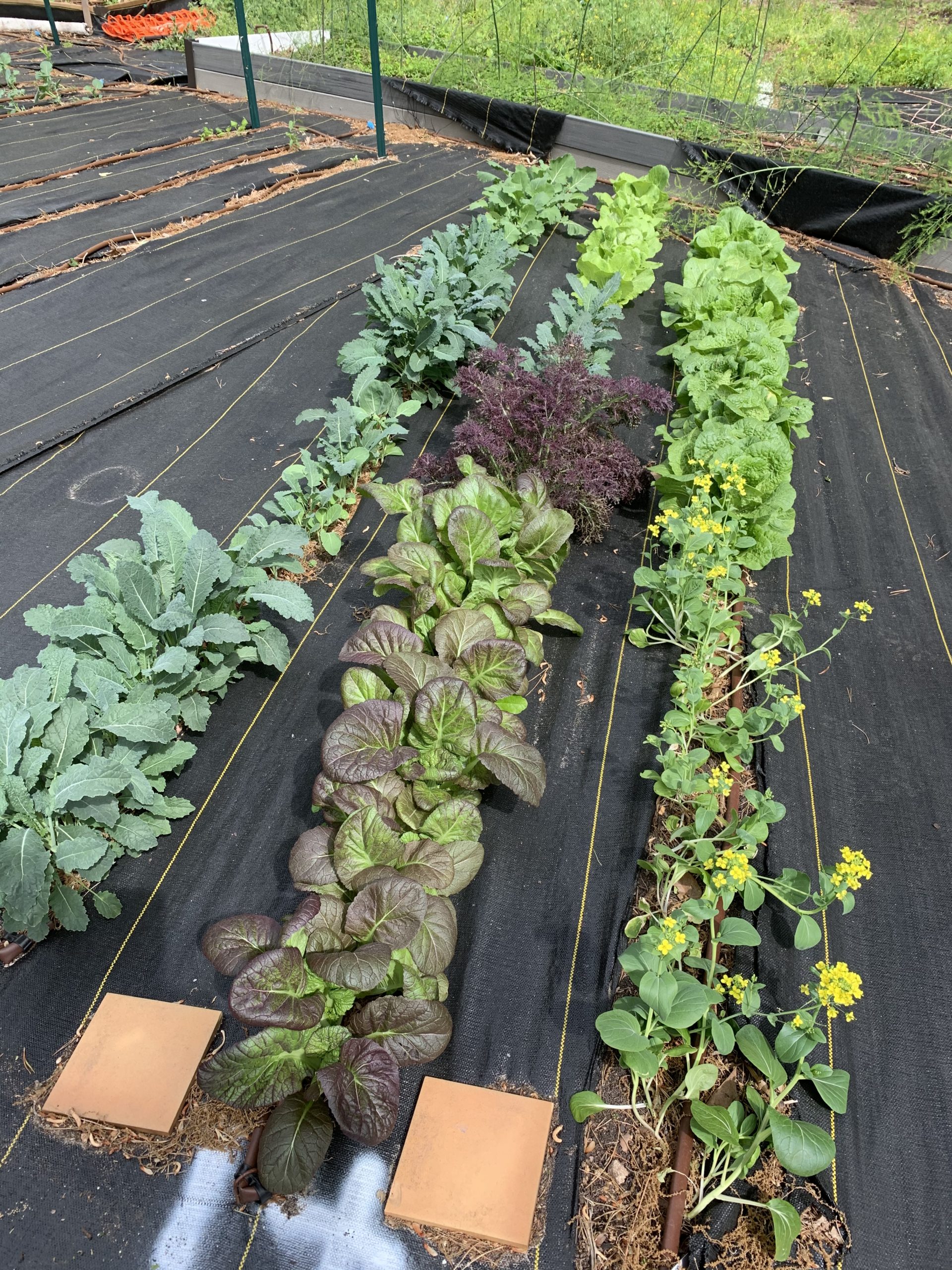Gardening for Health

A relaxing garden. Photo by Maria Price. 
Starting a veggie garden. 
Autumn Starburst azaleas by Encore Azaleas.
Ready, Set, Go Garden
By Maria Price
With the new growing season on the horizon, it’s time to evaluate last year’s gardening successes and failures. We can learn from the past to improve this year’s garden.
As gardening continues to trend since the start of the pandemic, look for a lot of new products and more convenience. With so many people working from home, we now have a more sustained interest in gardens and the environment.
Every year, there are new plant releases; this year, I expect we will see more that accommodate smaller garden areas. There have been a lot of plants with dwarf growth habits and new fruit colors. Encore Azaleas have released Autumn Starburst, a dwarf azalea that is coral with white stripes and blooms in the spring and again in the fall. Midnight Cascade from Bushel and Berry is a small blueberry that grows in a hanging basket. Syringa New Age Lavender is a compact lilac from Bloomables. Deutzia Raspberry Sundae is a new mini-shrub with beautiful pink-purple flowers that repeats flowering from mid-spring to mid-summer and adapts well to being grown in a container.
Nurseries and garden centers continue to offer safe and convenient shopping with home delivery and curbside pickup. Some nurseries even offer online shopping and more ready-made gardens. White Flower Farm offers pre-selected annual collections for containers. The collections range from five to six plants, with or without the container. One collection called Afternoon Tea comes in shades of pinks and purples with black foliage and you don’t have to stress if the growing requirements are all compatible.
You can also buy kits to create themed gardens, such as pollinator gardens for sunny spots that will attract butterflies, bees, hummingbirds and moths; bold foundation gardens for shaded areas; no fuss sunny-side up gardens with easy-to-care-for plants; tough as nails deer-resistant gardens for sun with perennials such as feather reed grass, Shasta daisies and English lavender; and native perennial gardens that would include Monarda, milkweeds and rudbeckia Goldsturm.
Once again, I expect to see more people growing their own food. We’ve seen the long lines of cars visiting food banks and pantries; there is still a large population that is food insecure—people lacking reliable access to a sufficient quantity of affordable, nutritious food. For a few dollars, seeds can go a long way to grow food. Any little scrap of land can be used and made into a garden. Some people may only have containers available to grow food. Products like grow bags come in an assortment of sizes and you’d be surprised at how much one can grow in them. You can even grow potatoes vertically in a 3-foot-wide circle of fence wire filled with compost and straw. This year you’ll also see more products for vertical gardening, to use in small spaces. The trend is for small homeowner greenhouses and native plants to replace maintenance-intensive lawns.
Raised beds can be used to create room for growing vegetables. Raised beds can be 6- or 12-inches deep. If you have voles, line the bottom with hardware cloth to keep them out. Fill the bed with a good compost. A raised bed will save your back and you’ll have fewer weeds.
All your cool weather plants can be started now. Radishes, lettuce, Brassicas (cabbage and broccoli), carrots, onions and potatoes can all be planted now. Warm weather veggies have to wait until late April or early May.
Make sure to order your seeds early as there were shortages in 2020 and I anticipate this will also be a high demand year.
Many seed starting kits will be available using energy-saving LED lights. These can be found from Park Seed and Gardeners Supply Company.
Invite some mason bees into your garden this year. Mason bees are superb pollinators that start working at lower temperatures in early spring, long before the honeybees. They are friendly, docile and fun to watch. Kits can be found at www.kinsmangarden.com.
You can also add worms to your composting process and learn more about vermicomposting to form nutrient-rich fertilizer for your garden.
Design a garden that benefits your cooking, wellness and beauty with plants within your reach. Herbs like rosemary and lemon balm can enhance your memory. Basil, oregano, dill and hundreds more flavor your food and improve your health. Native plants can help support wildlife and pollination of your vegetables.
I predict that Victory gardens will still be popular. With some school-aged children still learning from home, what better lesson than to teach your children to grow their own snacks like strawberries, blueberries and raspberries? Gardening also contributes to physical education, plant science and nutrition. Topics such as environmental science, horticulture and entomology can all become stepping stones to more serious study in the future.
If kids put effort into helping grow plants that you then convert it into a tasty dish together, they’ll eat it enthusiastically. Tomatoes can be turned into pizza sauce or spaghetti sauce, seasoned with home-grown herbs like basil and oregano.
Vibrant backyard habitats are beautiful to look at, and the creative outlet of gardening can help your family manage stress.
I believe that flowers and gardens everywhere can help make us a gentler people. Perhaps gardening can help unite us despite our differences. I truly believe this will be a good gardening year.
